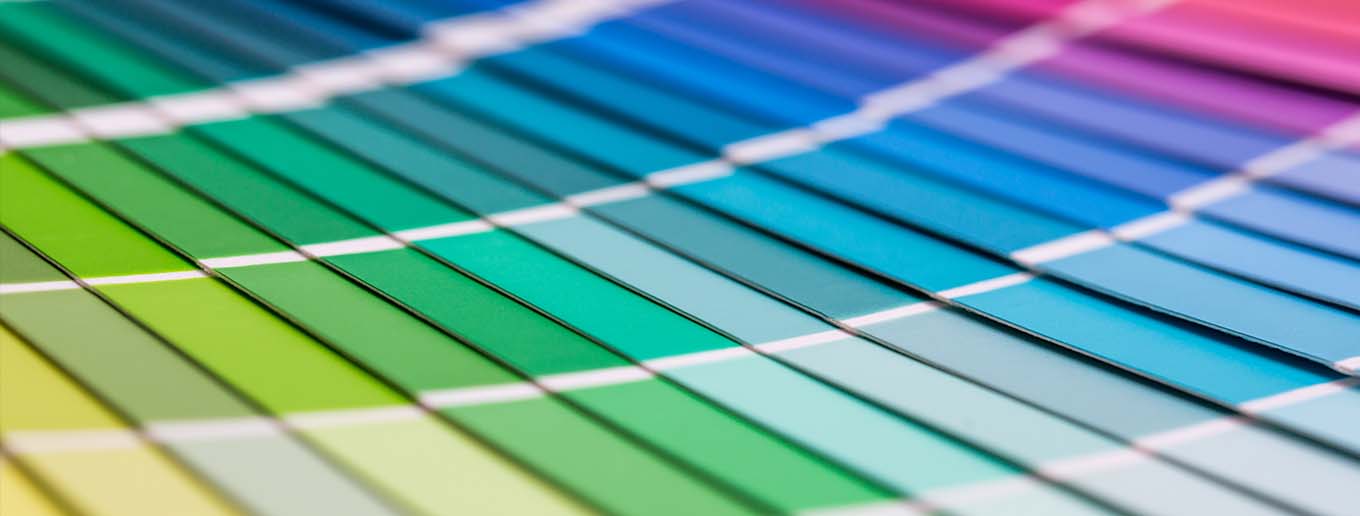How to Create Accessible Color Palettes
Help your message reach and resonate with more audiences.

Color accessibility isn’t just about compliance. It’s about communication. The colors you choose affect how clearly people can consume your content and understand your brand.
Taking accessibility into account early ensures your design works for everyone, right from the start. When you’re developing a new brand or refreshing an existing one, it’s the perfect time to review your color palette for accessibility. It’s much easier to build accessibility into your design from the very beginning than to retrofit your colors later or add special exceptions for certain documents or digital platforms.
Start by getting everyone on board
Accessibility works best when it’s part of your team’s culture, not just a one-off check. Make sure all stakeholders—designers, marketers, product managers, and leadership—understand the goal of accessible design. Build accessibility into your design and review process from the start, so color choices are through that lens. This shared understanding helps prevent last-minute fixes and ensures your brand communicates clearly for all audiences.
Understand what makes color accessible
Accessible color design is all about contrast and clarity. The Web Content Accessibility Guidelines (WCAG) provide measurable standards to help ensure text and visuals are easy to read for people with varying levels of vision. At its core, this means maintaining a sufficient contrast ratio between text and background colors—typically a minimum of 4.5:1 for normal text and 3:1 for large text at the AA level (the level most government organizations require), with even higher standards at the AAA level.
Color accessibility also considers how people with color blindness experience your palette. Around 1 in 12 men and 1 in 200 women have some form of color vision deficiency. When red and green look similar, for example, charts and infographics that rely solely on those colors to convey meaning can become confusing. A pie chart, for instance, may look like it only has one or two segments instead of several.
Check your palette and adjust as needed
Begin by evaluating your existing or proposed color palette using WCAG guidelines. Online contrast checkers can quickly show you how your colors measure up and where adjustments might be needed. Aim for at least Level AA compliance, but if possible, strive for Level AAA to ensure maximum readability and inclusivity. Even small shifts in hue, brightness, or saturation can make a big difference.
Go one step further with testing
Tools like Coolors.co include a color blindness simulator that lets you preview how your palette appears to people with different types of color vision deficiencies. This is an easy and effective way to make sure your colors communicate clearly to everyone, not just those with typical color perception. Checking your colors under these simulated conditions can help prevent miscommunication and ensure your visuals remain distinct and effective.
Create a color pairing guide
Even the most accessible palette will have limits. Some colors won’t pair well together. You might have two light shades or two dark tones that don’t provide enough contrast for text and background use. Create a color pairing chart to clarify which combinations meet accessibility standards and which don’t.
Include a brief explanation of color accessibility in your brand guidelines, so everyone on your team understands how to apply the palette correctly. This ensures your marketing materials consistently reflect both your brand’s personality and its commitment to inclusivity.
Building accessibility into your color palette isn’t just a design best practice; it’s an act of inclusion. By getting all stakeholders on board, considering color contrast, testing for color blindness, and documenting how your colors should be used, you make it easier for all audiences to engage with your brand. The result is a cohesive, compliant, and considerate design system that looks good and works well for everyone.
How to be Inclusive with Your Exclusive Brand
Create a strong niche while keeping your brand broad enough to grow.
Build Your Brand’s Mood Board
A team exercise to assemble the aesthetic of your brand.
Learning from Others
Five steps to discover fresh ideas by looking outside your industry



